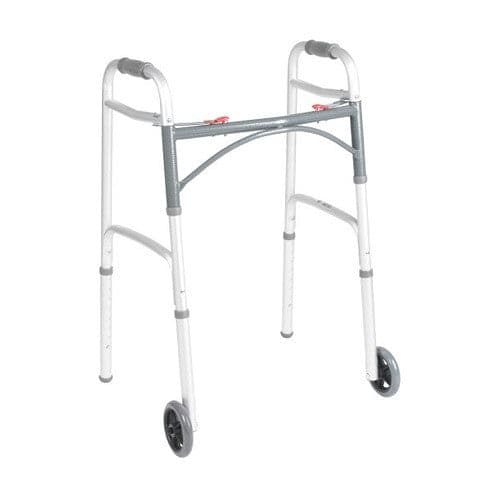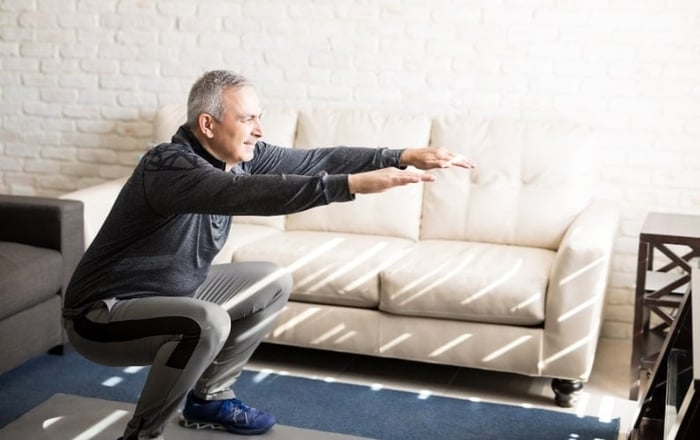Dealing with impaired mobility is difficult, and the right types of mobility aids can make a world of difference. Discover your options to get moving today.
According to a recent Census Bureau report, mobility is the most common disability amongst elderly Americans. In fact, nearly 40% of people age 65 and older said they suffered from at least one disability. Of that 40%, two-thirds said they experienced difficulties with walking or climbing.
This can be a serious issue, as limited mobility can make it difficult for seniors to carry out daily tasks such as doing chores, running errands, bathing, and eating.
Luckily, there are plenty of mobility aids available for struggling seniors. But, how do you know which mobility aid is right for your loved one?
Check out this guide to discover the different types of mobility aids for seniors.
1. Canes
If you're experiencing a minor injury or minor mobility or balance issue, then a crane can be useful, as it provides support to one side of the body while walking, much like a crutch.
However, compared to crutches, canes take less weight off the lower body and put greater pressure on the wrists and hands. In the US alone, 1 in 10 adults over the age of 65 uses a cane.
Canes come in many different styles and designs. Here are a few of the main types of canes to consider:
- White Cane: This type of cane is designed specifically for helping the visually impaired. They're longer and thinner than traditional canes and can be used to detect objects ahead
- Quad Cane: This cane has four feet at the end of it. The wider base allows for greater stability
- Forearm Cane: As the name suggests, this cane offers extra forearm support. This means greater weight can be distributed from the arm to the wrist
Some canes are also foldable and adjustable. If you go hiking or spend a lot of time walking on uneven surfaces, then you may also want to invest in a walking stick.
2. Crutches
If you're experiencing a temporary injury that doesn't allow you to put weight on your ankle, foot, or knee, then crutches may be the right choice for you.
Crutches help transfer weight from the lower half of your body to the upper half. You can use crutches in pairs or singly. Here are the main types of crutches you have to choose from:
- Underarm Crutches: This type of crutch is typically used for a short-term injury. To steady yourself, you place the crutch against your ribcage and under your armpit.
- Forearm Crutches: With this type of crutch, you place your arm into a metal or plastic cuff and hold a handgrip. This type of crutch is best for those with long-term disabilities.
- Platform Crutches: Your hand holds a grip with this type of crutch while your hand rests on a horizontal platform
Crutches also come in different sizes, so you want to make sure you get yours fitted for your height.
3. Walkers
Walkers are made of a metal framework that consists of four legs in order to provide stability to the entire body.
Basic walkers come with a 3-sided frame that requires the user to lift the frame and place it further in front of them with each step. Some walkers come with glides or wheels so that the user can walk without having to lift their walker with each step.
Here are the main types of walkers:
- Rollator Walkers: This type of walker consists of handlebars, a frame with four wheels, and even a seat so the user can rest when needed. Rollators also come with hand breaks as an added safety feature. For more information on rollators, read Getting a Rollator, A Buyer's Guide
- Knee Walkers: Knee walkers allow you to rest your knee on a padded cushion while pushing forward with the stronger leg
- Walker/Cane Hybrid: As the name suggests, it's a cross between a cane and a walker. These come with two legs rather than the full-frame, but still provide more support than the traditional cane.
Walkers can help you reduce the risk of falls, and they're great for anyone who struggles with balance and stability and needs support on both sides of the body.
Drive Medical PreserveTech Deluxe Folding Walker Two Button With 5" Wheels

$89.00
Drive Medical PreserveTech Deluxe Folding Walker Two Button With 5” Wheels Drive Medical Deluxe Folding Walker is an excellent option for those looking for a quality walker that can accommodate a wide range of individual needs. With its two-button functionality… read more
4. Wheelchairs
Wheelchairs are used by those who are unable to walk or who should not put weight on their lower limbs. If you suffer from a severe disability, a wheelchair is often more suitable than a walker, especially when you're trying to travel great distances.
Wheelchairs can be manually propelled, pushed by someone else, or electric. There was even a wheelchair designed recently that could be pushed forward by neural impulses.
There are many different types of wheelchairs out there, including:
- Standard Manual Wheelchair: This type of wheelchair is the most common and often the most inexpensive. It's best for someone who can self-propel.
- Hemi Wheelchair: This type of wheelchair allows the user to adjust the seat to floor height. These can be useful for those who wish to propel forward using their feet.
- Lightweight Wheelchair: These are great for full-time users, as they are lighter and easier to propel
- Bariatric Wheelchair: This wheelchair comes with a larger seat dimension and is best for heavier users
- Reclining Wheelchair: This type of wheelchair allows you to safely recline
To maintain as much mobility and range of motion has possible while using a wheelchair or walker, read Make That Move: 8 Useful Walker and Wheelchair Exercises to do Each Day.
5. Mobility Scooters
Mobility scooters come in two main types: Seated scooters or knee scooters.
With a seated scooter, the seat is set atop either 3, 4, or 5 wheels. Your feet rest on footplates, and there's a handlebar or steering wheel that allows you to control your direction. If you don't have the upper body strength or flexibility to use a wheelchair, this is a good option.
Knee scooters, on the other hand, offer a cushion for you to rest your ankle, leg, or foot while recovering from an injury. They are a stable and comfortable alternative to crutches, as they allow your hands to be free. However, knee scooters can be more expensive than crutches and harder to maneuver around certain obstacles.
Mobility Aids for Seniors: Which is Right for You?
As you can see, there are a lot of options out there when it comes to mobility aids for seniors.
If you're looking to purchase a mobility aid, be sure to check out our selection today.










